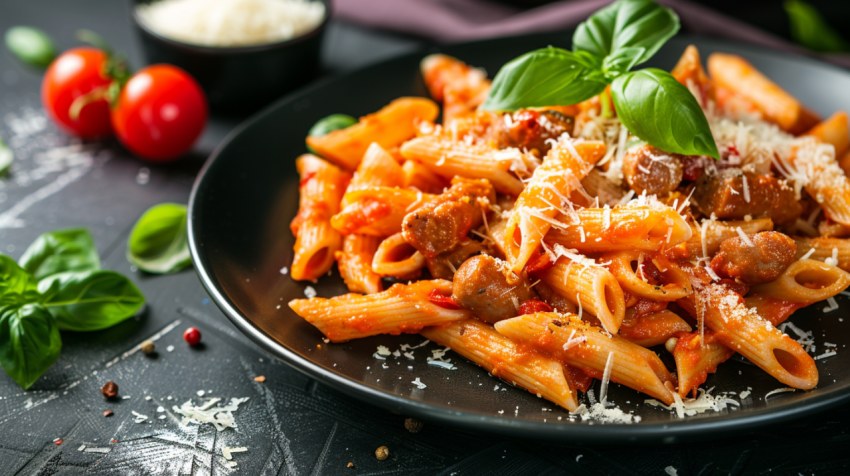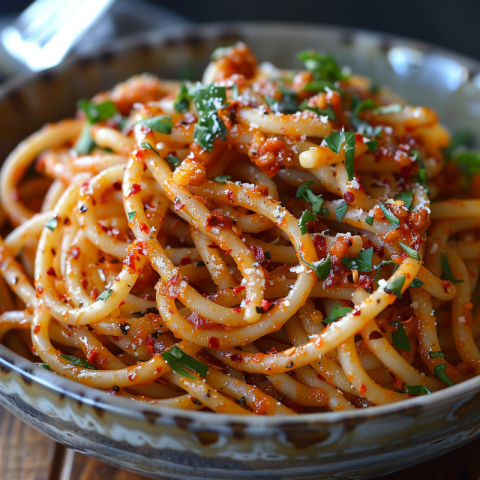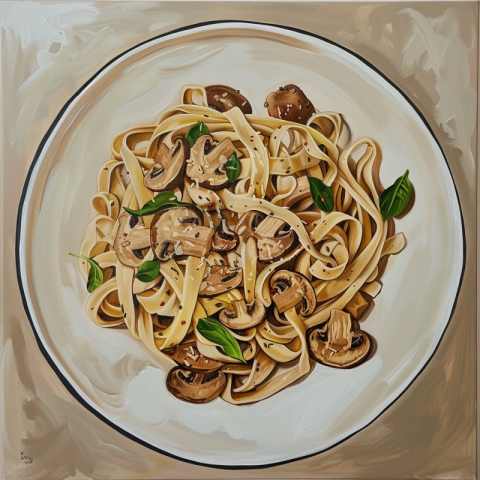











Pasta: A Culinary Staple with Italian Roots and Global Appeal
Pasta, a staple food made primarily from durum wheat semolina and water, is synonymous with Italian cuisine but enjoys worldwide popularity. Its versatility, affordability, and ability to pair with a vast array of sauces and ingredients have made pasta a beloved dish in countless cultures. From simple, rustic preparations to elaborate culinary creations, pasta offers a satisfying and delicious meal for any occasion.
1. The Origins of Pasta: A Journey Through Time
The history of pasta is a subject of some debate, with various theories about its origins:
- While often associated with Italy, some evidence suggests that early forms of pasta may have originated in Asia, with noodles being consumed in China as early as 5,000 BCE.
- The ancient Greeks and Romans also had dishes that resembled pasta, made from flour and water.
- One popular theory credits Marco Polo with bringing pasta from China to Italy in the 13th century, although this is disputed by some historians.
- Regardless of its exact origins, pasta became a staple food in Italy by the Renaissance, with different regions developing their own unique shapes and recipes.
- The development of pasta-making machines in the 19th century made pasta more widely available and affordable.
2. Types of Pasta: A World of Shapes and Sizes
Pasta comes in an astonishing variety of shapes and sizes, each with its own unique characteristics and culinary uses. There are estimated to be over 300 distinct shapes of pasta:
- Long Pasta:
- Spaghetti: Thin, long, cylindrical pasta, one of the most popular and versatile shapes.
- Fettuccine: Flat, ribbon-like pasta, often served with creamy sauces.
- Linguine: Similar to fettuccine but slightly narrower.
- Tagliatelle: Another flat, ribbon-like pasta, similar to fettuccine but typically wider.
- Angel Hair (Capellini): Very thin, delicate strands of pasta.
- Short Pasta:
- Penne: Tube-shaped pasta with angled ends, often used in baked dishes and with thick sauces.
- Rigatoni: Large, ridged, tube-shaped pasta.
- Fusilli: Spiral-shaped pasta, good for holding sauces.
- Rotini: Similar to fusilli, but with a tighter spiral.
- Farfalle: Bow tie-shaped pasta.
- Macaroni: Small, curved, tube-shaped pasta, often used in macaroni and cheese.
- Filled Pasta:
- Ravioli: Square or round pockets of pasta filled with various ingredients, such as cheese, meat, or vegetables.
- Tortellini: Small, ring-shaped pasta often filled with cheese or meat.
- Sheet Pasta:
- Lasagna: Wide, flat sheets of pasta, used to make the layered baked dish of the same name.
3. Pasta Dough: The Foundation of Flavor and Texture
The basic ingredients for pasta dough are simple:
- Durum Wheat Semolina: The preferred flour for pasta making, known for its high gluten content, which gives pasta its characteristic chewiness.
- Water: Used to hydrate the flour and create a dough.
- Eggs: Sometimes added to pasta dough, particularly for fresh pasta, to add richness and color.
4. Making Pasta: From Dough to Dish
The process of making fresh pasta involves several steps:
- Mixing: The flour and water (and sometimes eggs) are mixed together to form a dough.
- Kneading: The dough is kneaded to develop the gluten, which gives pasta its texture.
- Resting: The dough is allowed to rest, allowing the gluten to relax.
- Rolling: The dough is rolled out into thin sheets, either by hand with a rolling pin or using a pasta machine.
- Cutting: The sheets of dough are then cut into the desired shapes.
- Drying: Fresh pasta can be cooked immediately or dried for later use.
5. Pasta Sauces: A Symphony of Flavors
Pasta is often paired with a wide variety of sauces, ranging from simple tomato sauces to rich and creamy concoctions:
- Tomato-Based Sauces:
- Marinara: A simple sauce made with tomatoes, garlic, onions, and herbs.
- Arrabbiata: A spicy tomato sauce with chili peppers.
- Puttanesca: A flavorful sauce with tomatoes, olives, capers, anchovies, and garlic.
- Cream-Based Sauces:
- Alfredo: A rich sauce made with butter, cream, and Parmesan cheese.
- Carbonara: A sauce made with eggs, cheese, pancetta or bacon, and black pepper.
- Pesto: A sauce made from basil, pine nuts, garlic, Parmesan cheese, and olive oil.
- Meat Sauces:
- Bolognese: A slow-cooked meat sauce, often made with ground beef, tomatoes, and vegetables.
- Ragu: A general term for a meat-based sauce.
6. Pasta in Italian Cuisine: A Regional Journey
Pasta is central to Italian cuisine, with different regions boasting their own unique pasta dishes and traditions:
- Northern Italy: Known for its rich, creamy sauces and filled pasta like ravioli and tortellini.
- Central Italy: Home to classic dishes like spaghetti carbonara and amatriciana.
- Southern Italy: Known for its simple, flavorful tomato-based sauces and pasta shapes like orecchiette and penne.
7. Pasta Beyond Italy: Global Adaptations
While pasta originated in Italy, it has been adopted and adapted by cultures around the world:
- United States: Macaroni and cheese is a classic American comfort food.
- Asia: Noodles, which are similar to pasta, are a staple food in many Asian countries, with dishes like ramen, pho, and pad thai gaining global popularity.
- Many other countries have incorporated pasta into their cuisines, creating unique fusion dishes.
8. Pasta and Health: A Nutritious Choice
Pasta can be a part of a healthy diet:
- It's a good source of carbohydrates, which provide energy.
- Pasta made from whole wheat flour is a good source of fiber.
- It's relatively low in fat.
- Pasta can be paired with a variety of healthy ingredients, such as vegetables, lean protein, and healthy fats.
9. The Future of Pasta
- Pasta continues to evolve, with new shapes, flavors, and ingredients being introduced.
- Gluten-free pasta options, made from ingredients like rice flour, corn flour, and quinoa flour, are becoming increasingly popular.
- There is a growing interest in artisanal and handmade pasta.
Conclusion:
Pasta is a culinary staple that has captured the hearts and palates of people around the world. Its versatility, affordability, and deliciousness have made it a beloved food for centuries. From its Italian origins to its global adaptations, pasta offers a world of culinary possibilities, providing a satisfying and comforting meal for any occasion. As culinary trends continue to evolve, pasta will undoubtedly remain a central part of our diets, adapting to new tastes and preferences while retaining its timeless appeal.
Pasta, types of pasta, pasta shapes, pasta recipes, pasta sauces, Italian pasta, spaghetti, penne, fettuccine, ravioli, tortellini, lasagna, macaroni and cheese, pasta salad, how to make pasta, cooking pasta, pasta dough, fresh pasta, dried pasta, pasta brands, best pasta, healthy pasta, whole wheat pasta, gluten-free pasta, pasta nutrition, history of pasta, Italian food, pasta dishes, pasta near me, buy pasta online, pasta sauce recipes, easy pasta recipes.

